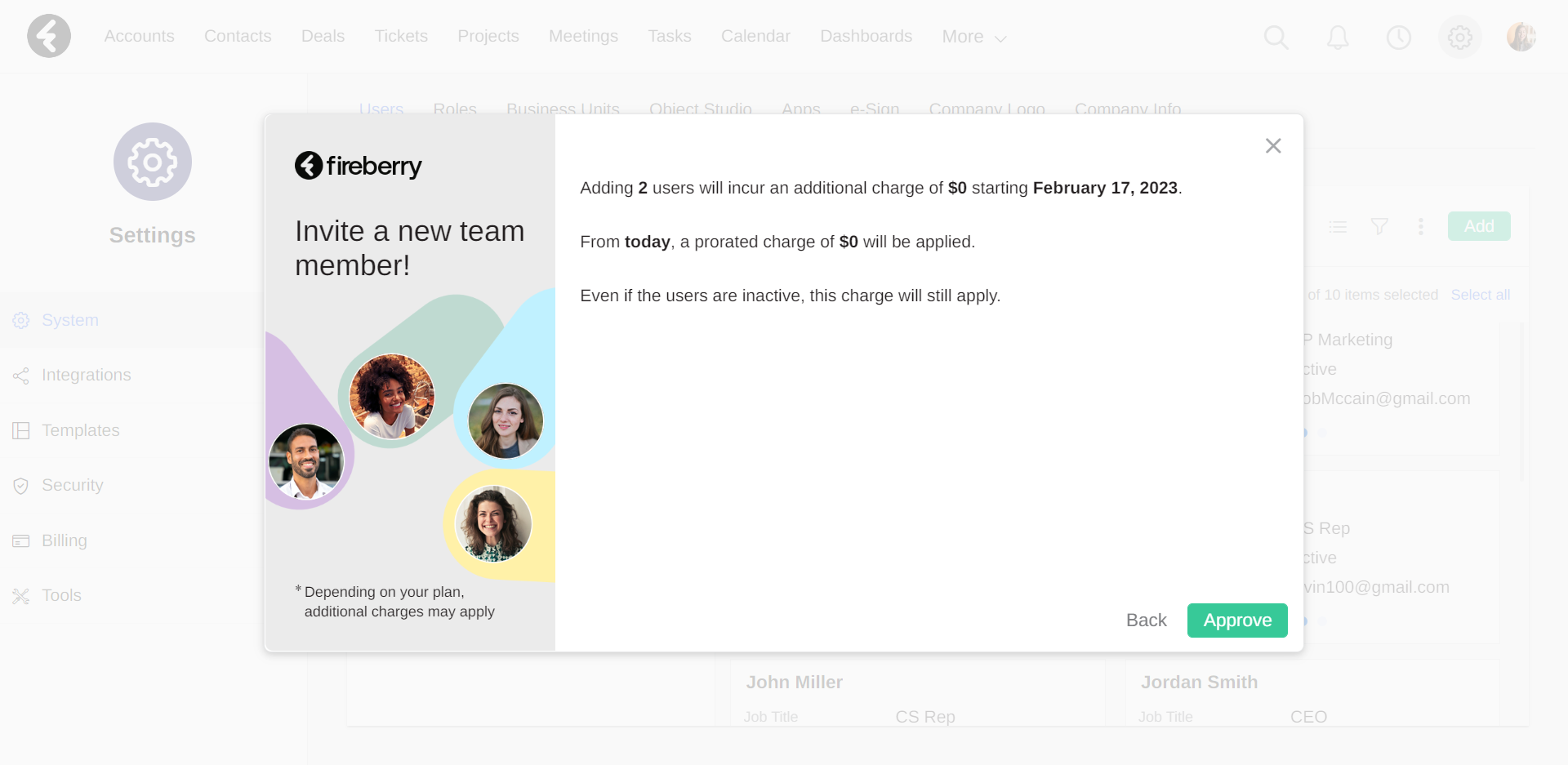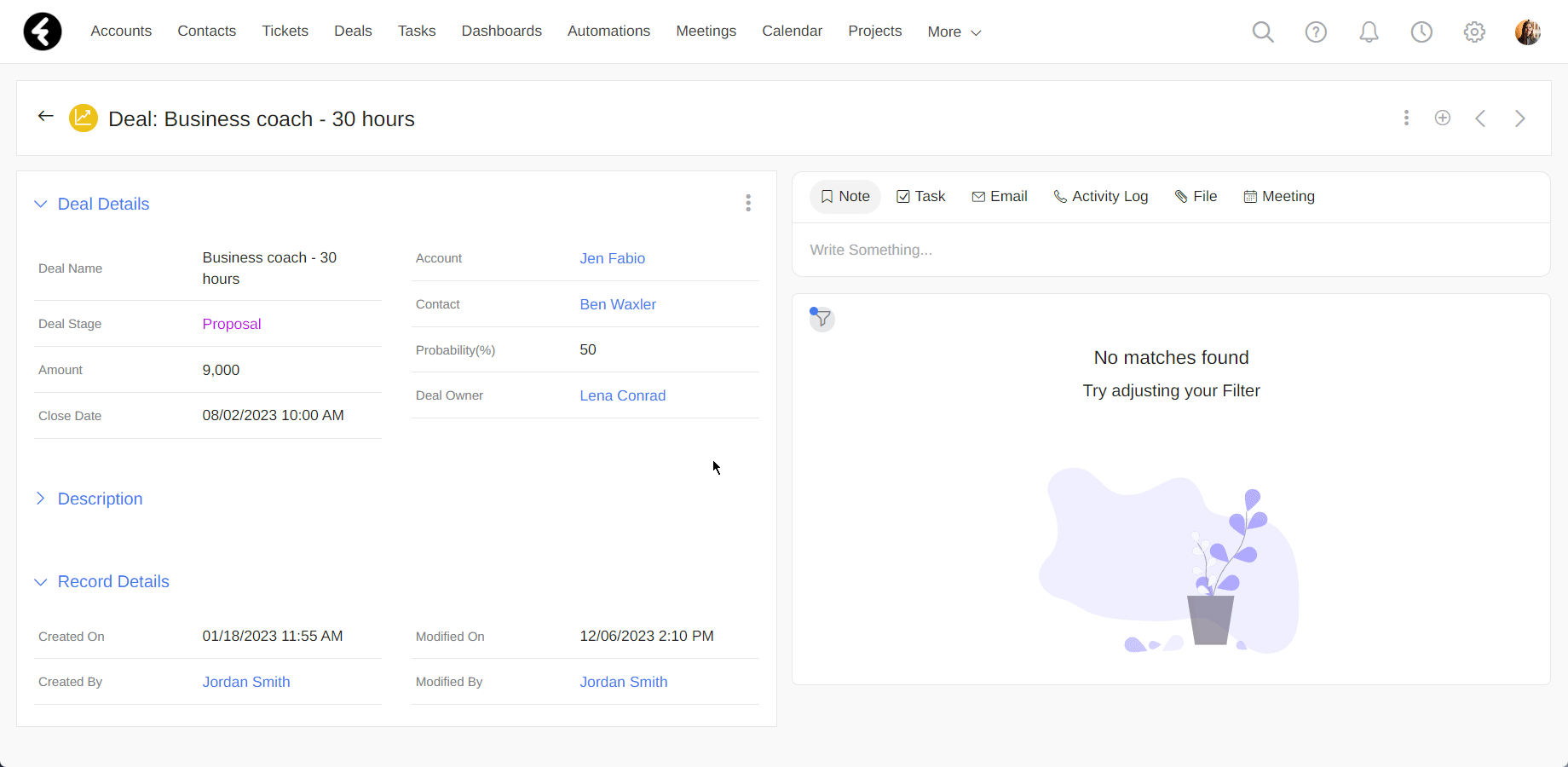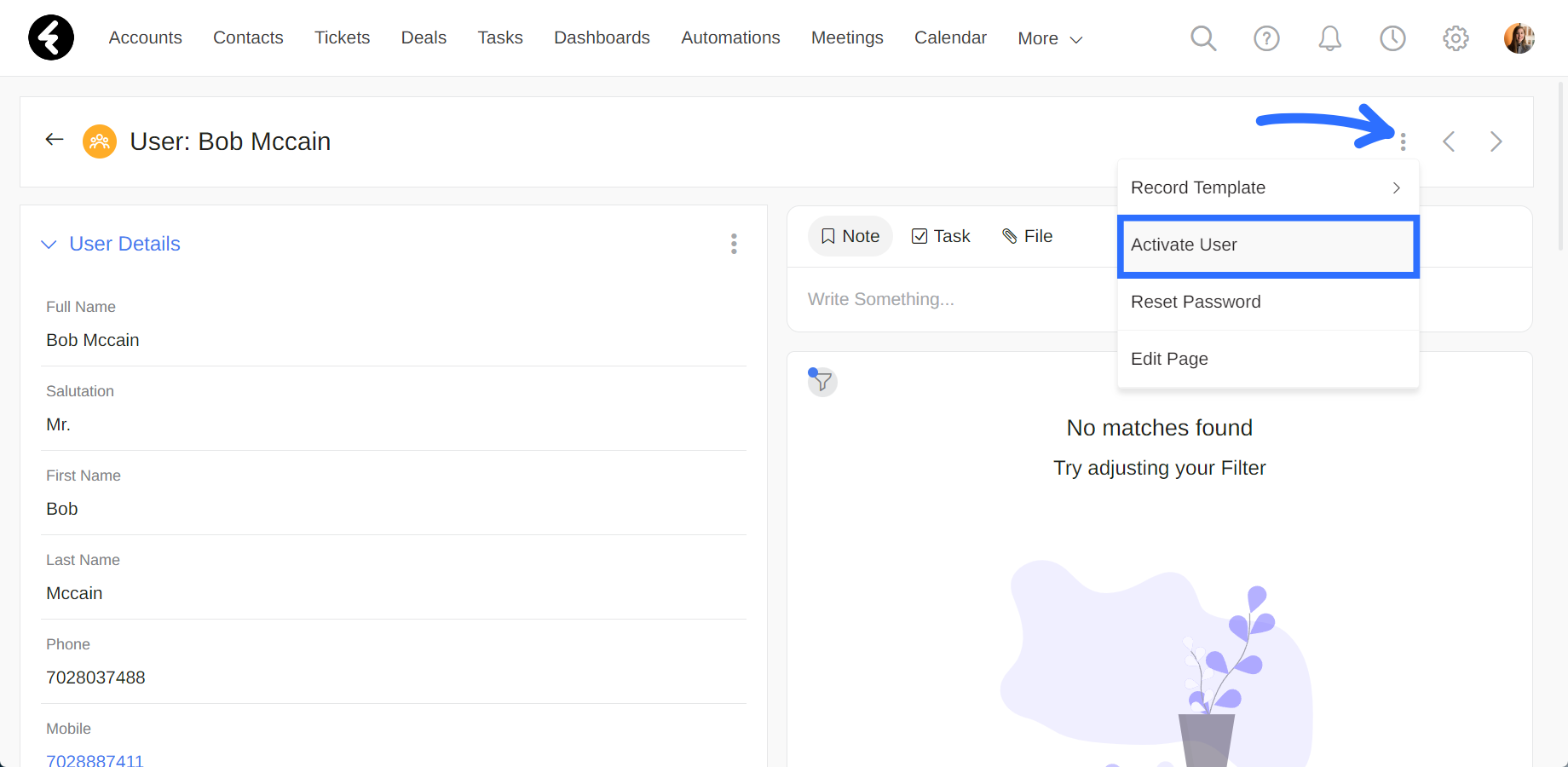Managing system users
Fireberry system users can access system data, manage and alter information, build system functions, communicate smoothly with other users, and much more. By using multiple system profiles, you can easily track user data, and know who created or modified each record and when. You’ll also allow your employees to collaborate with their teams efficiently, and you can set which data each team and team member will have access to. This will keep all your data in the right hands.
Adding new users
To create a new user, first click the settings gear on the top right of any system page. Then select the System tab and open the Users page. Here you’ll see a list of all your current users. To add new users, simply click the green Add button on the top right. This will open a page where you can add your new users.

Fill in the Full Name, Email, and Role fields to create your new user. All of these fields are mandatory and must be filled out. If you’d like to add multiple users, simply click + Add User. Once you’ve added all the new user details, click Add on the bottom right.
By clicking Add, you’ll open a page explaining the billing details of your new user or users. This charge will be based on your billing date and number of active users. Be sure you’re willing to accept the detailed charges, and then click Approve. If you’ve decided you would not like to add new users, simply click Back and you will not be charged. To learn more about billing, click here.

After adding the new users, they will be sent an email where they can set a password for their profile. Once they set a password, they can start using the system. This password can be changed at any time. You can learn more about passwords here. You can also update system user details yourself, such as their phone number, language settings, business unit, and more. Click on the record of the new user from the list of users opened above and then edit details on their page.

Managing multiple users
Once you’ve created multiple users, their profiles will be used throughout the system to track data and control permissions.
Created and Modified fields
Every record in the system has four built in read only fields: Created On, Created By, Modified On, and Modified By. These fields will provide you with an automatic log of who created the record and when, as well as who last edited any information in the record and when. In this way you can easily know who made which changes in your system. You can frequently find these fields in the last section of the record’s form under the title Record Details.

Owner fields
Each record in the system also has a built in owner field. While the name of the field may change, its API name, which you can learn about here, will always be ownerid. This field is a lookup field to system users, and will allow you to select one system user to be the owner of the record. You can learn how lookup fields work here. The owner field will automatically be set to the user who creates the record, but can be easily changed. Access to the record will be based on the user set in this field. To learn more click here.

Deactivating users
You can deactivate a user’s account so that they will no longer have access to the system. This will also open a slot in your billing plan so you can add a new user. To learn about your billing plans, click here.
To deactivate a user, first open the main users page by clicking the settings gear on the top right of any page. You can then click on the user you’d like to deactivate to open their page. You can now use the three dot menu on the top right and select the Deactivate User option. In the pop up, click Ok. A green pop up will appear at the bottom of the screen confirming your user is now deactivated.

Reactivating users
To reactivate a user's account, open the main users page by clicking the settings gear on the top right of any page. Next, select the record of the user you’d like to reactivate to open their page. Click the three dot menu on the top right and select the Activate User option. In the pop up that opens, click Ok. A green pop up will appear at the bottom of the screen confirming this user will now be able to access the system.
